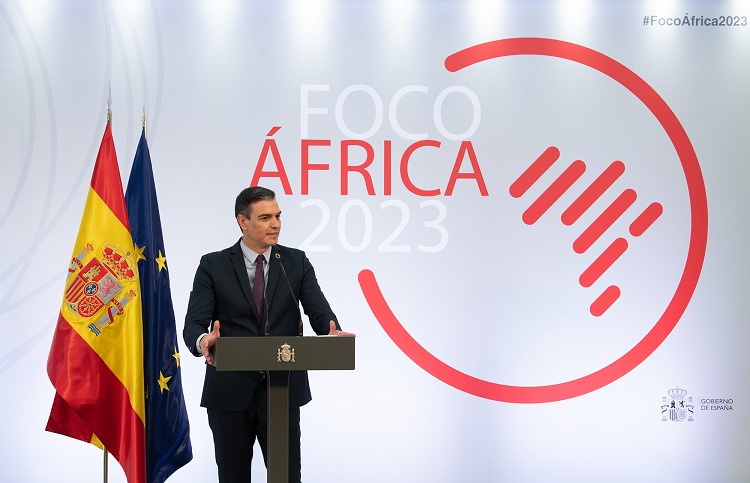The Diplomat
The first Barometer of the Image of Spain in Sub-Saharan Africa of the Elcano Royal Institute reveals that our country is little known in that region of the world, in comparison with China, the USA or the main former colonial powers, while soccer is the most highly valued element of the Spanish reality.
After nine years of conducting the Barometer of the Image of Spain in different parts of the world, the Elcano Royal Institute has focused for the first time on the countries of Sub-Saharan Africa, where it has applied a questionnaire similar to the one used in Europe, America or Asia.
This study was carried out through 2,800 interviews in seven African countries (Ivory Coast, Ethiopia, Ghana, Kenya, Nigeria, Senegal and South Africa, with 400 interviews in each) chosen for their strategic importance for Spain. South Africa, Nigeria and Ethiopia are listed as “anchor countries” and the other four appear among the “priority countries” of the Government’s Third Africa Plan 2019 and the Africa Focus 2023, the roadmap for Africa’s development presented last March by the President of the Government, Pedro Sánchez.
The first and most important conclusion of this study, made public last December 14, is “the low level of knowledge of Spain in Sub-Saharan Africa”, a consequence of the scarce historical, commercial, economic, cultural presence and, in general, of the small volume of exchanges, of all kinds, between Spain and the countries of the area, according to Elcano.
Spain’s rating in the area is the same as that of China and Italy (5.7 on a scale of zero to 10), below the rating of the three great former colonial powers in the area, the United Kingdom, Germany and France, and below that of the USA, although the differences are not very great. In any case, Spain’s score is above the average score that African countries give themselves (5.3).
The most highly valued element of the Spanish reality in Sub-Saharan Africa is sport, especially soccer, since it is the factor on which most information about Spain reaches the continent. Next come Spain’s infrastructures, its tourist attraction, its gastronomy, its security and its current cultural production. In Senegal, the largest source of emigrants to Spain in this geographical area, the reception of migrants in our country receives a score of remarkable (7.3), the highest in the group.
“The profile of Spain’s image in the area is very positive and, in comparison with that obtained in Europe, offers traits of greater modernity and wealth,” the report highlights. South Africa is undoubtedly the country most critical of Spain in the area, although here too its image of Spain is more positive than negative. However, this good valuation and image of Spain does not affect the goods produced in our country, which suffer a prestige deficit in comparison with its possible international competitors.
As far as international relations are concerned, the USA is the country chosen in first place as a preferred ally. In second place is China, which is much better valued than any European country, including Spain, and the EU as a whole, which occupy very secondary positions. China’s influence in the area is also reflected in other indicators, such as the desire to attract its investments, which is much higher than in Europe (36% compared to 14% in Europe), or the greater support for China in its tensions with the USA. Only 11% of Europeans (BIE 2021) support China in this competition with the USA, compared with 25% of the sub-Saharan Africans surveyed. In addition, China appears as the country that has performed best in the face of the COVID-19 epidemic, a very different judgment from that made by other regions of the world.






